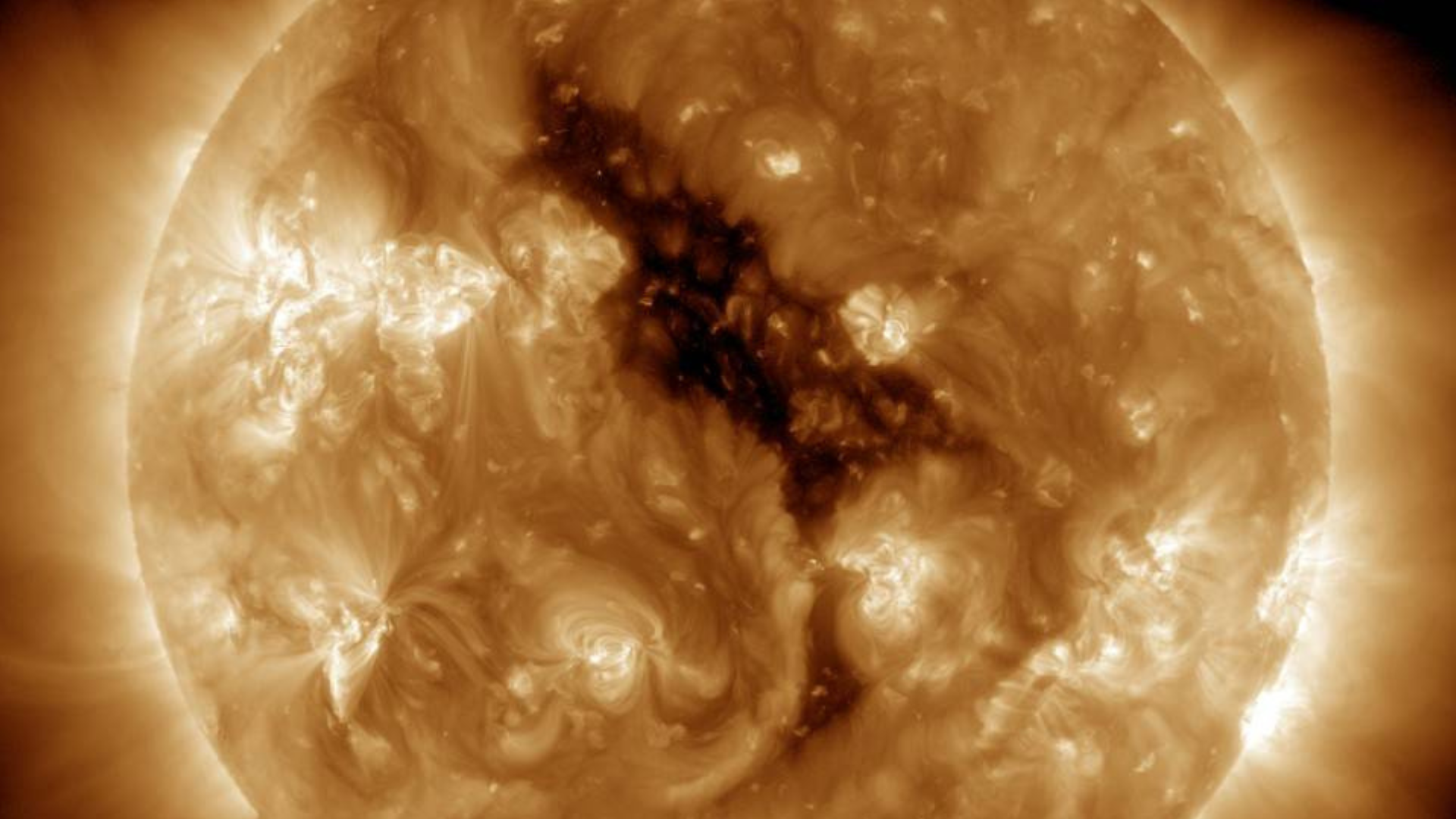Solar Orbiter observes rapid, tiny jets on sun that may be the solar wind's power source
"The energy content of a single 'picoflare' jet that lives for about 1 minute is equal to the average power consumed by about 10,000 households in the UK over an entire year."

Solar scientists have spotted small-scale, short-lived jets of energy emerging from dark holes in the sun's outer atmosphere, or corona, for the first time.
These so-called "picojets" could be supplying both energy and matter in the form of plasma to solar winds, high-speed outflows of hot gas from the sun that can fill up interplanetary spaces.
Solar winds have been connected to coronal hole sources previously, but quite how this particle outflow originates in the region has been a mystery. But with new knowledge about picojets, the puzzle could finally be solved. These tiny jets were seen in extreme ultraviolet images of the sun and its corona obtained by the European Space Agency (ESA) spacecraft, the Solar Orbiter.
"Jets, in general, have previously been observed in the solar corona," Lakshmi Pradeep Chitta, head of the discovery crew and Max Planck Institute for Solar System Research team leader, told Space.com. "The picoflare jets that we observed are the smallest, and energetically the weakest, type of jets in the solar corona that were not observed before."
Related: Solar activity may peak 1 year earlier than thought. Here is what it means for us
Picojets are small but pack quite a plasma puch
Though these picojets may be small and last no more than 60 seconds, as Chitta pointed out, they are still powerful in their own right.
"The 'pico' prefix refers to the energy scale of the jet. The picoflare jets that we discovered are a trillion times energetically weaker compared to large X-class flares," he said, X-class flares being the sun's most powerful explosive outflows.
Breaking space news, the latest updates on rocket launches, skywatching events and more!
"Still," he continued, "the energy content of a single picoflare jet that lives for about 1 minute is equal to the average power consumed by about 10,000 households in the UK over an entire year."
Chitta explained that it is the frequency of the picojets that he and the team observed with the Solar Orbiter's Extreme Ultraviolet Imager (EUI) while the spacecraft was just 31 million miles (50 million kilometers) from the star. Studying this parameter led them to believe these tiny jets are a substantial source of energy and matter for solar winds.
The team also has an idea about what may be creating picojets in coronal holes, pointing to magnetic reconnection as the likely driver of the phenomena. Magnetic reconnection, in this case, refers to the breaking and reconnecting of magnetic field lines that ultimately releases a tremendous amount of stored energy. In fact, this activity is is a fundamental process for stars.
"Magnetic reconnection is thought to be, by its nature, a highly intermittent process. Such a process is then a suitable candidate to explain the intermittent picoflare jet outflows," Chitta said. "Our observations reveal the intermittent base of the solar wind by capturing reconnection-driven plasma jets to the currently smallest resolvable scales of about 124 miles (200 km) in the solar corona. We expect that there could still be smaller jets that we cannot resolve at the moment."
Chitta also explained the findings the team arrived at delivered at least one surprise, which was that these small jets were present in even the darkest areas of coronal holes.
"Coronal holes are maintained by 'open' magnetic fields of the sun. Usually, magnetic fields loop back to the solar surface, but in these open field regions, the lines of force stretch into interplanetary space," Chitta explained. "The ionized gas freely escapes, and the corona appears darker here compared to the surrounding regions filled with closed magnetic fields that trap hot plasma and thus appear brighter.
"We were pleasantly surprised to detect faint picoflare outflows even in the very 'inactive' and thus 'darker' portions of the observed coronal holes."
The team will now continue to monitor coronal holes and other potential sources of the solar wind with the Solar Orbiter to better understand phenomena such as solar flares, coronal mass ejections and solar wind as a whole.
These observations could eventually help solve one of the most pressing mysteries surrounding the sun — why its outer atmosphere, the corona, is thousands of times hotter than its surface despite being further from the source of stellar heat, the nuclear furnace found at our sun's heart.
"New and upcoming solar missions are all geared to better observe and understand these small-scale magnetic processes in action," Chitta concluded. "Then not only will we improve our understanding of the physics of fundamental plasma and astrophysical processes, but we can also learn more about how solar activity drives space weather."
The research was published on Thursday, Aug. 24 in the journal Science.

Robert Lea is a science journalist in the U.K. whose articles have been published in Physics World, New Scientist, Astronomy Magazine, All About Space, Newsweek and ZME Science. He also writes about science communication for Elsevier and the European Journal of Physics. Rob holds a bachelor of science degree in physics and astronomy from the U.K.’s Open University. Follow him on Twitter @sciencef1rst.
